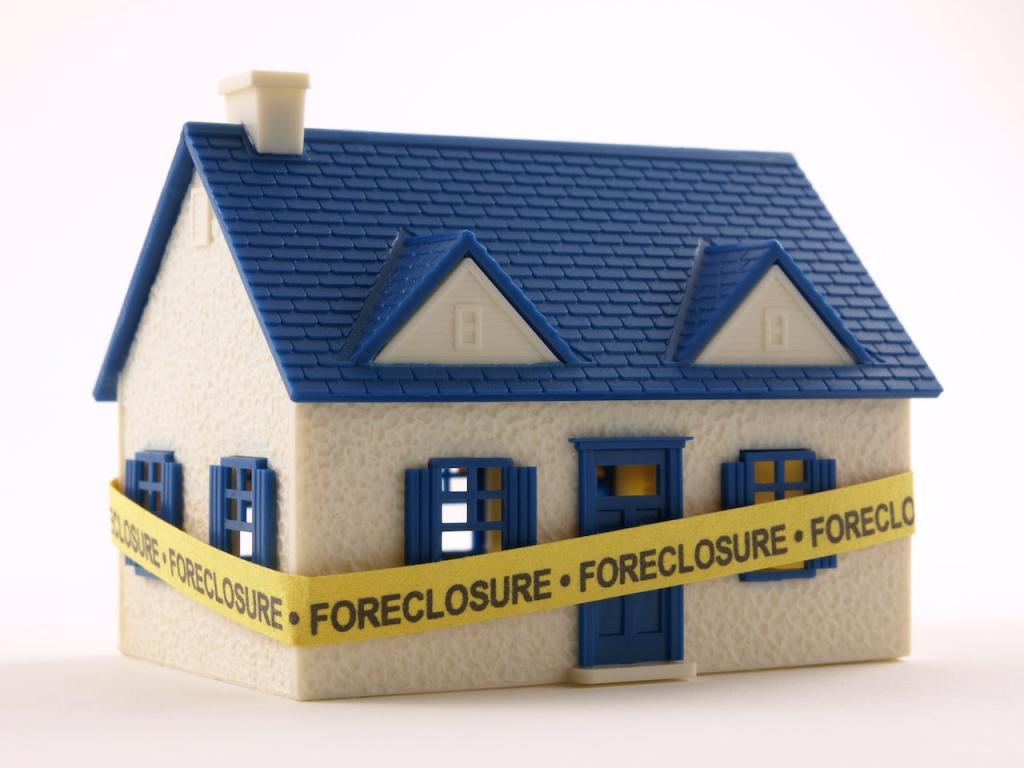Even though mortgage origination volumes are down, we’re experiencing a highly competitive purchase market. That means a number of businesses, seeking to grow their revenue, will likely look to expand their reach to the default and REO space.
But for those who haven’t done their homework, this is not an easy step, nor is it easy money. More than a few firms learned this the hard way during the housing meltdown and Great Recession, when foreclosure volume soared and public scrutiny intensified.
Those who cannot remember the past are condemned to repeat it. It can also be said that those who have not stayed current with this changing environment will be in for some serious challenges as well.
A moment of reckoning may be imminent for the default and REO industry. Many in the industry are already rising to meet it. Yet, we’re going to soon find out who’s heeding the lessons taught by the last foreclosure wave.
A look at default activity past and present
The default industry was thrust into the public view during the Great Recession. From 2007 through mid-2013, approximately 5.5 million households lost their homes to foreclosure.
While there are many reasons this came to be, the public focus quickly turned to the consumer and how poorly, in their perception, lenders and servicers treated them during the process.
Within the industry, many providers struggled with the sheer volume of transactions. While the historic amount of foreclosure activity was unprecedented, the industry, as a whole, was not as prepared as it should have been.
At least, that was the general perception.
Now, reports from Black Knight and ATTOM are showing signs that, while we may not be looking at another foreclosure spike anything like what we experienced in the late 2000s, we are likely in for a definite increase in default activity.
Understandably, foreclosure has never been a popular topic. Nor should it be. It’s the antithesis of the American Dream.
The mortgage lending industry exists to make home loans, not to repossess them. But the default surge accompanying the Great Recession; the struggle to manage it effectively and the subsequent public backlash inspired a number of consequences that changed the way lenders, default-focused firms and REO businesses had to operate.
What had already been a lengthy and complex process, as a result, became even more complicated. A 2012 Gallup Poll asserted that 58% of Americans preferred that the federal government take additional action to prevent foreclosures.
There’s little to suggest that sentiment has changed, which means that, today, mortgage lenders need to focus not only on an additionally scrutinous enforcement but the impact of public sentiment as well.
The housing meltdown and Great Recession inspired a flurry of activity in the hopes of dampening any future such surges in foreclosure. Some unintended consequences, such as the rise of “zombie foreclosures” or increase in abandoned properties, were the result.
It would appear, now, that we’ll find out how effective the changes made will be.
What’s really changed since 2013?
The obvious result of the surge of foreclosures in the early 2010s was a wave of legislative and regulatory action. Especially where service providers were unprepared for the sudden pivot in market conditions after the refinance boom of the early 2000s.
The result of that reaction has been a no-nonsense approach to default and foreclosure. While well intended, that reaction has only created an extended foreclosure process.
Another lesson learned, the hard way, from the foreclosure spike of the late 2000s was that scalability is the key to a market that can change quickly.
More than a few of the consumer-focused stories featured in the mainstream media during the height of the foreclosure spike were likely the result of the quick pivot from refinancing boom to default that caught many businesses flat-footed.
Most of them are no longer in the industry. But the result remains the same.
The default industry has digitalized a lot more. Many of the largest servicers have made major investments in automating their production platforms and workflow management systems. But they have yet to be tested by heavy volume.
The next major change in the default landscape is the way those who hold the loans, the lenders, are reacting to default. Likely because of more aggressive regulatory scrutiny, loss mitigation has become more of a priority.
Loan modifications, deeds in lieu and short sales have now become the preferred path to addressing defaults, although none of them are 100% effective. In fact, one could argue that they can often delay the process or even exacerbate the challenge.
The bottom line? It’s harder, more expensive and more time-consuming to foreclose on a defaulted mortgage today than ever before.
How should the mortgage, servicing and default industries be preparing for the inevitable next spike?
The 2008 housing crisis happened 15 years ago. The world, and the default industry, are different now.
Lenders, servicers, asset managers and all of the other firms working in the REO industry should be well aware that default volume will soon be increasing and that it’s well past time to prepare.
It starts with compliance (and a little bit of PR). Public perception, right or wrong, has led to fairly intense scrutiny of the default servicing industry.
As volume increases, servicers and lenders should be sure to have compliance resources in place. They should also be on top of other compliance considerations such as oversight, training, staffing recommendations and, above all, documenting everything.
Lenders and servicers should also be mindful of the push toward “first look” programs as well. This is a direct reaction to the surge of single family home purchases by investors seeking to subsequently rent those properties.
Freddie Mac, for example, has put forth an initiative which, for the first 30 days of a new MLS listing, essentially blocks out investors in favor of owner-occupants or public entities that would drive owner-occupancy instead of rental.
As is so true in any industry, compliance begins on the front lines. If a lender or servicer has a solid set of policies and procedures, but its contractors or employees don’t adhere to them, the lender or servicer faces the same exposure they would if they had no plan in place at all.
Having the right boots on the ground is critical and that starts with thorough training (and continuous updating) and effective monitoring. This won’t just protect against legal or regulatory risk. It’s also a sound way to help improve or at least maintain the entire industry’s reputation in the eyes of the media (as well as the public and regulators).
Consumer experience needs to be a part of the overall strategy of every firm serving the default and REO space.
Technology is often mentioned as a panacea for just about anything, but the investment must come after careful consideration about what systems are needed and what will provide the best fit.
Now is the time for any business involved in the REO industry to strategically review its workflow and efficiencies, especially on the customer service and field management side of operations.
More importantly, technology is the ultimate fulcrum for “right-sizing” staffing levels. There are numerous options available for scalable solutions. And the businesses that leverage them will likely see the positive results in the coming year.
Final thoughts
This is an industry of partnerships. A successful home closing simply cannot happen without a multitude of firms — mortgage brokers, appraisers, title companies, real estate brokers and professionals — investing their efforts and collaborating. If your partner/service provider isn’t of a like mind, you’re not ready for the next REO spike.
There are a number of other considerations for which we’ll all need to be prepared when default volume increases.
Vendor management should begin with holding third party service providers to the same standards as the company they’re serving and they should be held accountable if they fall short of those standards.
In many cases, the existing standard even needs to be raised. Be certain your vendors are staying updated and have effective policies that align with your own regarding legal eviction, rehabilitation, liens, code enforcement, vacant property registrations
A mortgage lender with the right approach will still be faulted for a botched or inhumane eviction process if the law firm or third party with which it partners doesn’t share the same principles and practices.
The good news is that any number of firms (real estate professionals, servicers and asset managers) have long since evolved from where the industry was in 2010.) The ability to oversee and monitor has also been dramatically improved with the arrival of better technology.
Stricter compliance standards demand better vetting. It’s built upon seamlessness. For instance, does their tech align with yours?
However, the service levels of the vendors you depend upon to manage your risk mitigation and default processes (servicers, real estate professionals, asset managers) can make all the difference. This is a nation that revolves around perception. Public relations can mean everything, although this is not a call for “spin.”
There are community-focused default professionals and businesses out there. One of the easiest ways to mitigate the heightened risk that comes with conducting default-related transactions in high volume is to find programs and entities that are working to do things the right way.
The best default professionals aren’t looking to take people out of their homes. They’re looking to help them to find their path back to the American Dream. In so doing, they’re also supporting the entire REO and default industry.
Michael Krein serves as President of the National REO Brokers Association (NRBA) and Managing Partner for House Karma, a digital ecosystem created to facilitate affordable, sustainable homeownership and neighborhood stabilization.
This column does not necessarily reflect the opinion of HousingWire’s editorial department and its owners.
Michael Krein at mkrein@nrba.com
To contact the editor responsible for this article:
Deborah Kearns at deborah@hwmedia.com






